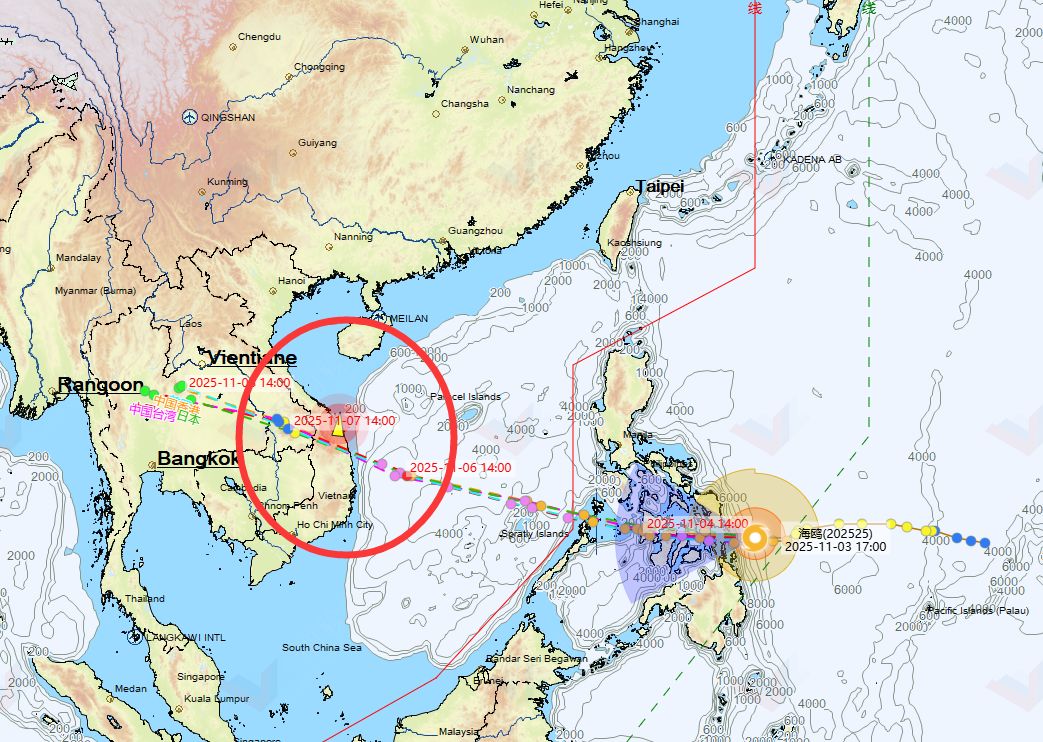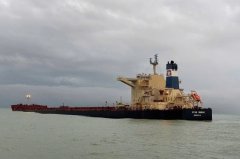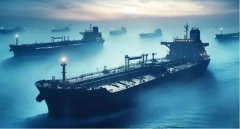
Official Vietnamese sources and
VOV.VN confirm that the Liberian-flagged Capesize bulk carrier Star Bueno (178,978 DWT) ran aground off Quang Ngai Province on October 26 during severe weather.
The vessel, carrying 174,790 tons of iron ore from Saldanha Bay (South Africa) to Dung Quat Port (Vietnam), broke anchor amid strong winds and high waves before drifting ashore.
The Quang Ngai Maritime Authority immediately dispatched inspection teams and tugboats, requiring the owner to submit a pollution-control and safety plan. By October 29, the Star Bueno was refloated and moved to a safe anchorage, though seawater ingress was detected in several cargo holds. Pumping and stabilization operations are ongoing.
On November 1, the Vietnam Maritime and Waterway Administration (VMWA) convened an emergency coordination meeting with the Vietnam Maritime Search and Rescue Coordination Center (VMRCC), port authorities, the shipowner, salvage contractors, and cargo owners. Officials later arrived on-site to supervise technical assessments and pollution-prevention work.
 Typhoon Kalmaegi Approaching the Same Region
Typhoon Kalmaegi Approaching the Same Region
At the same time, Typhoon Kalmaegi (No. 25 of 2025) is tracking westward across the South China Sea toward central Vietnam, directly along the same coast where the Star Bueno is anchored.
According to the China Meteorological Administration’s forecast issued at 10 a.m. on November 3, Typhoon Kalmaegi’s center was located about 950 km southeast of Manila, with maximum winds of 30 m/s (Force 11) and a central pressure of 980 hPa.
The storm is expected to make landfall over the central Philippines late November 3–early November 4 (strengthening to 40–45 m/s, Force 13–14), then enter the South China Sea on November 5, intensifying to 42–50 m/s (Force 14–15) before turning toward Vietnam’s central coast, potentially affecting Quang Ngai and neighboring provinces by November 6–7.
With Star Bueno still undergoing recovery and structural inspections at anchorage, authorities are closely monitoring the developing typhoon path, as further heavy weather could complicate salvage, increase hull stress, and heighten environmental-risk factors.
This unfolding situation highlights the extreme weather vulnerability of Capesize vessels at anchor during monsoon and typhoon seasons, and underscores the need for rapid inter-agency coordination among port authorities, shipowners, and rescue teams to ensure safety and environmental protection.
by Xinde Marine News Chen Yang
The opinions expressed herein are the author's and not necessarily those of The Xinde Marine News.
Please Contact Us at:
media@xindemarine.com


 Gunfire Returns off Somalia: Armed Clash Between Pi
Gunfire Returns off Somalia: Armed Clash Between Pi  178,000-DWT Capesize “Star Bueno” Flooded After
178,000-DWT Capesize “Star Bueno” Flooded After  908 Tankers Sanctioned: One-Third of Aframax Fleet
908 Tankers Sanctioned: One-Third of Aframax Fleet  Xinhua: China and the United States Reach Consensus
Xinhua: China and the United States Reach Consensus  Breaking: Sanctioned Russian Tanker Grounds in Suez
Breaking: Sanctioned Russian Tanker Grounds in Suez  Attention Distraction: A Major Threat to Maritime S
Attention Distraction: A Major Threat to Maritime S